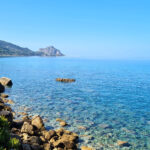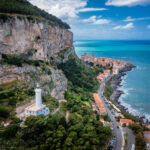
Discovering the wonders of Palermo
Only 70 km from Cefalù lies the capital city of Sicily – the beautiful and artistically rich city of Palermo. A journey through the streets of the city will offer you the opportunity to fully immerse yourself in the history, art, architecture and culture of Palermo, providing a detailed overview of the places that have marked the history of the province and their unmistakable characteristics. Here is an example of a recommended itinerary!
There is no better way to start a tour of Palermo than with a visit to the suggestive Foro Italico, a large waterfront area that once served as the city’s main port. This historic site, dating back to Roman times, offers spectacular views of the sea and a complete immersion in the surrounding natural greenery: an essential place for relaxation and sport during a visit to Palermo. From here, you can head to the picturesque area of La Cala, a charming neighbourhood that fuses maritime atmosphere with history, allowing you to admire the traditional fishing boats and stroll along the streets overlooking the harbour.
Next, head to Porta Felice, an imposing medieval gateway that marks the entrance to Palermo’s historical centre. This majestic 16th-century structure features a splendid Baroque façade and has a symbolic significance for the city, representing one of the main access routes to the historic centre and its monumental wonders. The particularity of Porta Felice is its double façade, with the exterior façade clad in light-coloured marble forming columns, niches and balustrades, surmounted by two fountains at the foot. The inner façade, facing the city, is classical in style with late Mannerist influences.
After Porta Felice, one can immerse oneself in the tranquillity of the Garibaldi Garden, an enchanting public park in the heart of Palermo. The entrances, characterised by a fine cast-iron fence, overlook the city’s main streets. Dedicated to Giuseppe Garibaldi, Italy’s national hero, this garden offers an oasis of peace and greenery in the city’s lively context, allowing you to relax, admire ornamental plants and flowers, and enjoy a rejuvenating break. The pride of the garden’s flora is the ficus, one of the oldest and largest in Italy, at 30 metres in height.
The cultural experience continues in the old Kalsa district with a visit to the Abatellis Palace, a magnificent 15th-century mansion that houses the Regional Gallery of Sicily. This Gothic-Catalan palace is an architectural gem and houses priceless works of art, including Antonello da Messina’s Renaissance masterpiece ‘The Annunciation’. Designed with innovative elements for the Sicilian culture of the time, the palace has a simple and balanced façade enriched by a majestic portal. After the palace, it is advisable to make a stop at the Church of Santa Maria degli Angeli, also known as La Gancia. This fascinating Baroque church, also located in the Kalsa district, stands out for its majestic façade and interior richly decorated with stucco, marble and frescoes. Built in the 15th century at the behest of the Reformed Observant Friars, it houses priceless historical works of art, including those by Antonello Gagini, Pietro Novelli and Antonello Crescenzio, which blend Baroque and Renaissance styles.
The tour continues to the Oratory of San Lorenzo, located next to the Church of St Francis of Assisi. Here, you can admire valuable frescoes and stuccoes depicting episodes from the lives of St Francis and St Lawrence. The oratory offers an immersion into the history and religious art of the city, although it was unfortunately the victim of an artistic theft in 1969, when Caravaggio’s ‘The Nativity’ was stolen. However, it has now been replaced by a life-size photographic copy. Afterwards, you can proceed to Corso Vittorio Emanuele, one of Palermo’s main streets that stretches from the Teatro Massimo to Piazza Marina. This avenue is full of shops, historic cafés and period buildings, offering the opportunity to admire the splendid architecture of the noble palaces that testify to the elegance and opulence of the city’s past.
Finally, you will reach Piazza Sant’Anna, a lively and welcoming square in the centre of Palermo. Here, you will be able to admire the Church of Sant’Anna, a Baroque structure with an imposing façade and ornate interior, although it has suffered an unfortunate history due to its location, making it prone to earthquakes and tremors. However, its monumental beauty, especially in the interior with a Latin cross with three naves, twelve columns and a trompe l’oeil on the transept of the central nave, remains intact.



